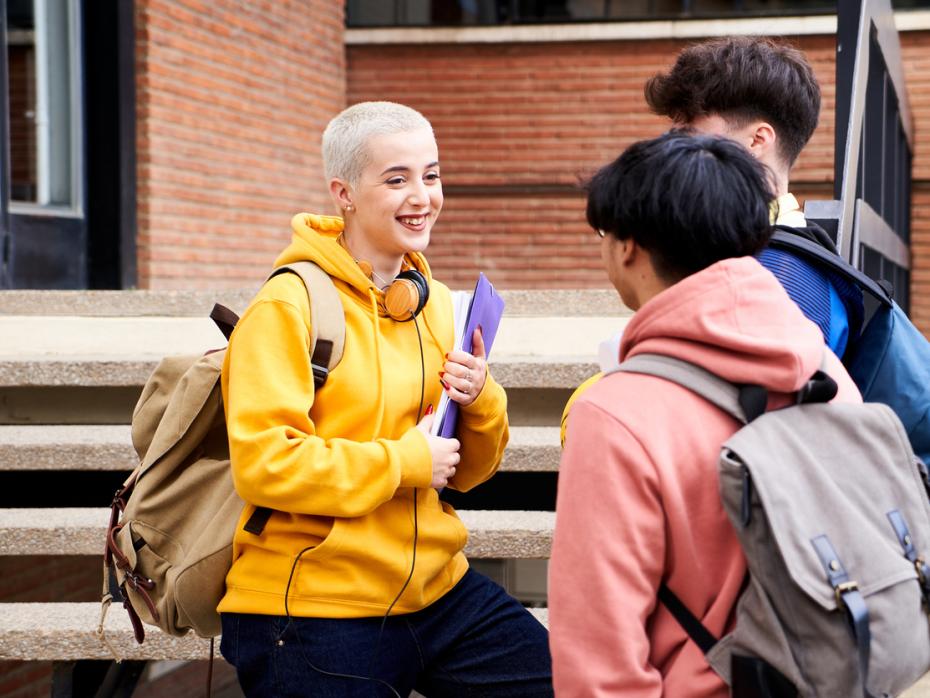Changes are difficult for many autistic students, and the transition to university is particularly challenging, involving major adjustments to both study and home environments.
The methods institutions use to present information, particularly videos packaged in a high-stimulus format, are not attuned to the needs of some neurodiverse students when they are making this change. Just as a noisy seminar room can quickly become overwhelming for some students, a “noisy” (both auditory and visual) video can have unintended negative consequences.
To address this, we piloted a series of low-stimulus videos aimed at students with autism spectrum conditions to help ease their transition into higher education. In this resource, we discuss the videos, the feedback we received and some hints and tips for those who wish to create a low-stimulus video library.
Our process
We created four videos for the pilot: an introduction to Manchester, an introduction to the University of Manchester’s disability service and its support for autistic students, a short introduction to some well-being facilities and an introduction to the department of physics and astronomy.
We posted these online in 2011, and some years later, we rerecorded some and refined others using more professional methods such as autocue.
After close consultation with students, we filmed an introduction to the main university library, updated information about quiet spaces and well-being facilities on campus and a short video on a specific, smaller on-campus library with a room that students identified as being particularly quiet and that operated with an easy booking system.
The aim was to produce the videos clearly and logically with no unnecessary background noise or visual effects. Everything in the video had to be in there for a reason. It required considerable thought and consideration.
At the time, one of the co-authors of this piece, Norman Darwen, a recently retired autism transitions officer, regularly provided support to undergraduate and postgraduate autistic students, so we decided that he would be the face and voice of the videos to provide a level of familiarity for students. Norman evaluated the videos using his experience working with autistic students.
- Resource collection: Making your campus neurodivergent friendly
- How can we create accessible and inclusive learning environments for neurodivergent students?
- Supervising neurodiverse postgraduate researchers
Student feedback
Student feedback was positive. Some students and parents told us they had viewed the videos before making their applications (we posted them on our disability service website and student advisers sent them around. Some students shared links to the videos on social media and we played them at the university’s welcome day events. Interestingly, some non-neurodiverse students also said they found them useful (remember, some students may not yet have a diagnosis). We’ve noticed these videos being watched throughout the academic year. The only criticism was that there weren’t enough of them.
Tips for making low-stimulus videos
- Do involve current students in the production development. Ask them what they would have liked to have known. Ideally, show first drafts of the videos to current students for feedback
- Do keep noise and visual effects to only those that are necessary
- Do present information in a logical order, for example, if you are showing a route into a building, then show images of the actual route as if you were walking it
- Do make sure what is appearing on screen is what you are talking about
- Do add interesting facts about what you are talking about
- Do think about who will provide the voice-over. A staff member with whom students are familiar is ideal
- Do keep videos between approximately two and a half to five minutes long. Student feedback suggests this is the most effective length
- Do provide information that will help address concerns about the unknown. Examples include: “Between lectures, the foyer becomes noisy, but there is a quiet room at…”, “The office closes at 4pm…” and “This is an image of a typical lecture theatre, it holds 260 students.”
- Don’t worry if some people find the videos boring. This is about doing the best for our students
- Don’t worry about making all your videos at once. It is better to build up a library of videos slowly, evaluating and learning from each one.
Suggestions for further videos
- A breakdown of the structure of the academic year, since a major stress factor for many neurodiverse students is the timetable changes that each new semester brings.
- A video outlining and explaining the definitions of university-specific terms, such as: “semester” and “term” and differences between “school”, “department” and “faculty” for example.
Low-stimulus videos are underused in higher education. They are initially challenging to make because each image and sentence needs to be carefully thought through to ensure their clarity, succinctness and value. Our experience is that they can be extremely useful to students who need them.
Norman Darwen is a recently retired autism transitions officer and Mark Hughes is senior lecturer in physics at the University of Manchester.
If you’d like advice and insight from academics and university staff delivered direct to your inbox each week, sign up for the Campus newsletter.




comment2
(No subject)
(No subject)